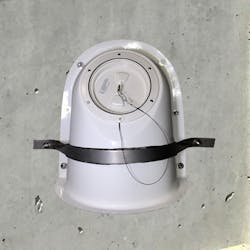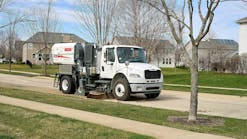Change in Direction Requires New Thinking for Water Quality Hoods
About the author:
Best Management Products Inc., www.bmpinc.com, 800.504.8008
TechnipFMC, a global leader in subsea, onshore, offshore and surface technologies serving the energy sector approached Best Management Products Inc (BMP) with an application for their SNOUT water quality hoods in 2019. Juan Toro, P.E., a principal engineer at TechnipFMC, advised that their client, a major oil and gas company, was expanding a portion of its Gulf Coast industrial facility. For that project, a new drainage system was required, and that is where BMP learned of the challenge. Typically, the hoods are only installed over the outlet pipe of a sump style storm water structure, skimming off floatable pollutants and allowing heavier solids to sink. However, for this application, the hoods were needed on both the inlet and outlet pipes of the structures to isolate the pipe network from potentially flammable or explosive vapors and liquids.
The problem here involved a complete change in the directional forces the hoods had to withstand. When this hood is installed over an outlet pipe, it is bolted to the structure wall to keep it in place and compress the oil-resistant gasket to make a good seal. In this case, the force of the flow actually pushes the hood toward the wall, so mounting is a fairly simple task. For the project, drainage pipes that the hoods needed to cover ranged in size from 10 to 28 inches inside diameter (ID). When maximum flows and velocities were considered, hydraulic forces of up to several thousand pounds could be present with the force trying to push the hoods off the structure walls. As such, a super duty, vapor-tight hood with a new mounting system was required. The first thing designers did was increase the material spec to the 1708 biaxially reinforced fiberglass found in BMP’s HD (Heavy Duty) line of hoods, and the wall thickness was doubled. Then the thickness of the mounting flange was doubled again, and the access hatch was reversed and reinforced.
Engineers still had one more hurdle to overcome—how to keep them fastened to the structure wall during high flows. BMP substituted the standard stainless shield anchor system with wedge anchors, each with 3,000-pound pullout strength. The number of anchors per hood varied from six to 12, and one or two stainless-steel straps, based on hood size, each with a 4,000-pound tensile strength, were added to the restraint system to add a safety factor. This was the second project that Toro and TechipFMC approached BMP with for a custom solution in the operating environment in the petrochemical industry. Nearly 100 hoods were supplied for this project, for which construction is underway.






